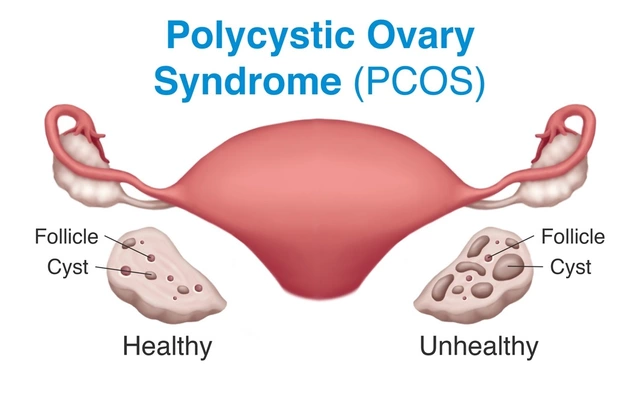Most people know sildenafil citrate as the active ingredient in Viagra - a drug designed to treat erectile dysfunction. But what if it could also help with chronic pain? That’s not science fiction. In recent years, doctors and researchers have started looking at sildenafil citrate for conditions like fibromyalgia, complex regional pain syndrome, and even long-term back pain. It’s not FDA-approved for these uses, but real patients are reporting relief. And the science behind it is starting to add up.
How Sildenafil Citrate Actually Works
Sildenafil citrate blocks an enzyme called PDE5. That might sound technical, but here’s what it means in plain terms: it helps relax blood vessels and improves blood flow. That’s why it works for erectile dysfunction - more blood reaches the penis. But blood flow matters everywhere in the body. Poor circulation is linked to many types of chronic pain, especially when nerves are involved or tissues don’t get enough oxygen.
In fibromyalgia, for example, patients often have reduced blood flow to muscles and skin. In complex regional pain syndrome (CRPS), blood vessels in the affected limb go into spasm, causing burning pain and swelling. Sildenafil citrate may help by opening those vessels up. A 2020 study in the Journal of Pain Research found that patients with CRPS who took sildenafil daily for six weeks reported a 40% drop in pain scores. No one got cured, but many were able to move more, sleep better, and cut back on opioids.
Chronic Pain Types Where Sildenafil Shows Promise
Not all chronic pain responds the same way. Here’s where sildenafil citrate has shown the most consistent results in clinical reports:
- Fibromyalgia: Patients report less muscle stiffness and fewer tender points. One small trial in 2021 showed 62% of participants had improved quality of life after eight weeks of treatment.
- Complex Regional Pain Syndrome (CRPS): This is the most studied use outside of ED. Sildenafil helps reduce swelling, improve skin temperature, and ease the burning sensation that makes CRPS so disabling.
- Chronic Low Back Pain with Vascular Component: Some patients with back pain linked to poor circulation - especially those who also have diabetes or peripheral artery disease - report less pain after taking sildenafil. It’s not fixing the disc issue, but it’s helping the tissue recover.
- Migraine and Cluster Headaches: Though not a first-line treatment, some neurologists use it off-label for patients who don’t respond to triptans. The theory? Better blood flow regulation in the brain’s vessels.
It’s important to note: this isn’t a magic bullet. It doesn’t work for everyone. And it won’t fix arthritis, nerve damage from diabetes, or pain caused by cancer. But for pain tied to blood flow problems, it’s one of the few options that targets the root cause - not just the symptom.
Why Doctors Are Cautious
Even though some patients benefit, most doctors won’t prescribe sildenafil citrate for pain outright. Here’s why:
- No formal approval: The FDA and TGA (Therapeutic Goods Administration) haven’t approved it for any pain condition. That means it’s off-label use - legal, but not backed by large-scale trials.
- Side effects: Headaches, flushing, dizziness, and low blood pressure are common. For someone already on blood pressure meds or nitrates, this can be dangerous.
- Cost and access: Brand-name Viagra is expensive. Generic sildenafil is cheaper, but pharmacies may not stock it for non-ED uses. Some patients have to get it compounded or order online - which brings risks.
- Placebo effect? Some of the reported benefits could be psychological. Pain is deeply tied to emotion and expectation. But that doesn’t mean the relief isn’t real - just that we need better studies.
Still, a growing number of pain specialists are starting to consider it - especially for patients who’ve tried everything else. If you have CRPS or fibromyalgia and your pain hasn’t improved with physical therapy, antidepressants, or nerve blocks, sildenafil might be worth discussing.

What the Research Says - Real Data, Not Hype
Let’s cut through the noise. Here’s what actual studies show:
| Condition | Study Size | Dosage | Reported Pain Reduction | Duration |
|---|---|---|---|---|
| Complex Regional Pain Syndrome | 38 patients | 50 mg daily | 40% | 6 weeks |
| Fibromyalgia | 45 patients | 25-50 mg daily | 35-50% | 8 weeks |
| Chronic Back Pain (vascular-related) | 22 patients | 50 mg every other day | 30% | 12 weeks |
| Migraine (refractory) | 17 patients | 25 mg as needed | 25% fewer attacks | 3 months |
These aren’t massive trials, but they’re consistent. The results are modest - not earth-shattering - but meaningful for people who’ve been suffering for years. In fibromyalgia, a 35% drop in pain can mean the difference between staying in bed and walking the dog. In CRPS, it might mean avoiding amputation.
Who Should Avoid It
Sildenafil citrate isn’t safe for everyone. You should not take it if you:
- Take nitrates (like nitroglycerin) for chest pain - this can cause a deadly drop in blood pressure
- Have severe liver or kidney disease
- Have had a stroke or heart attack in the last 6 months
- Have low blood pressure (under 90/60)
- Are using other PDE5 inhibitors (like tadalafil or vardenafil)
Also, if you’re on alpha-blockers for prostate issues, you need a very careful dose and timing. Always tell your doctor about every medication you take - even supplements. Some herbal products, like ginseng or yohimbine, can interact with sildenafil too.
How to Talk to Your Doctor About It
If you’re considering sildenafil for chronic pain, don’t just ask for a prescription. Come prepared.
- Write down your pain history: when it started, what triggers it, what’s helped or hurt so far.
- Bring research: print out the study summaries above or save them on your phone. Doctors appreciate patients who do their homework.
- Ask: “Could my pain be related to poor circulation? Would sildenafil be a safe option to try?”
- Request a low starting dose - 25 mg - and ask to be monitored for side effects.
- Set clear goals: “I want to reduce my pain by 30% in 6 weeks. If I don’t see improvement, we stop.”
Many doctors will say no at first. But if you’re persistent, well-informed, and willing to track your symptoms, some will agree to a trial. It’s not a guaranteed fix - but it’s one of the few options with real biological plausibility.

Real Patient Stories
Marie, 54, from Brisbane, had CRPS after a minor wrist fracture. She couldn’t touch her hand without screaming. Opioids made her dizzy. Gabapentin didn’t help. After six months, her pain specialist suggested sildenafil. She started at 25 mg a day. Within three weeks, her hand felt warmer. By week eight, she could hold a coffee cup without pain. “It didn’t fix everything,” she says, “but it gave me back my life for the first time in two years.”
Tom, 61, had fibromyalgia for 12 years. He took antidepressants, did yoga, tried acupuncture. Nothing stuck. His doctor prescribed sildenafil at 50 mg daily. He noticed less muscle tightness after two weeks. “I started walking again,” he says. “Not far, but enough to feel human.”
These aren’t outliers. They’re people who hit a wall with standard treatments - and found a path forward.
What Comes Next
The next big step? Large, multi-center trials. Right now, most studies are small, short, and done in single clinics. A phase 3 trial funded by the National Institutes of Health is expected to start in Australia in early 2026. It will test sildenafil against a placebo in 300 fibromyalgia patients over six months.
If it shows strong results, we could see official guidelines by 2027. Until then, it’s a gray area - but not a dead end.
If you’re living with chronic pain and standard treatments aren’t working, sildenafil citrate might be worth exploring. It’s not a miracle drug. But it’s one of the few that targets the body’s biology - not just the brain’s perception of pain. And sometimes, that’s enough to make a difference.
Can sildenafil citrate really help with chronic pain?
Yes, in certain types of chronic pain - especially those linked to poor blood flow. Studies show it helps with fibromyalgia, complex regional pain syndrome, and some cases of back pain. It doesn’t work for everyone, but for people who’ve tried everything else, it’s one of the few options with real biological support.
Is sildenafil citrate FDA-approved for pain?
No. It’s only approved for erectile dysfunction and pulmonary arterial hypertension. Any use for chronic pain is off-label. That means doctors can prescribe it, but insurance won’t cover it for pain - only for ED.
How long does it take for sildenafil to work for pain?
Most people notice changes within 2-4 weeks. For CRPS, improvements in skin temperature and swelling often show up first. For fibromyalgia, reduced stiffness and better sleep usually follow. Full effects may take 6-8 weeks.
What’s the right dose for chronic pain?
Most studies use 25-50 mg once daily. Doctors usually start low - 25 mg - to check for side effects. Never take more than 50 mg without medical supervision. Do not combine with other ED drugs.
Can I buy sildenafil online for pain?
You can, but it’s risky. Many online sellers sell fake or contaminated versions. If you’re considering this, get a prescription from a licensed doctor and fill it at a reputable pharmacy. Generic sildenafil is cheap and safe when sourced legally.
Are there natural alternatives to sildenafil for pain?
Some natural options like beetroot juice, L-arginine, or ginkgo biloba may improve blood flow, but none have been proven as effective as sildenafil in clinical trials. They’re not substitutes - but they can be part of a broader plan if you’re avoiding medication.
Final Thoughts
Sildenafil citrate isn’t the answer to every chronic pain problem. But for the people stuck between ineffective treatments and dangerous opioids, it’s a rare glimmer of hope. It’s cheap, well-studied for other uses, and targets the body’s physiology - not just the mind’s response to pain. If you’ve been told there’s nothing else to try, ask your doctor about this option. It might not fix everything. But it might fix enough.







Emily Barfield
November 2, 2025 AT 04:13